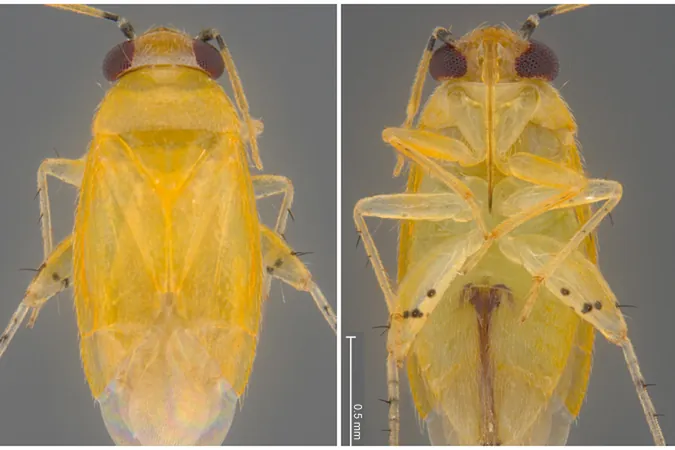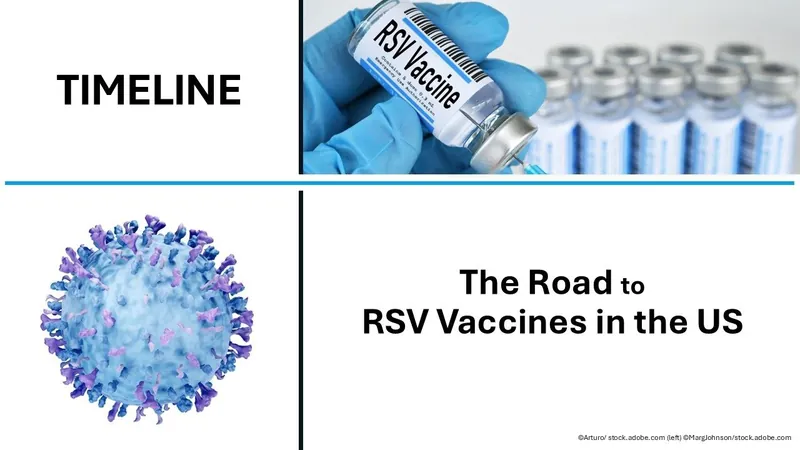
Unveiling the CDC's Secret Weapon: The Epidemic Intelligence Service
2025-04-14
Author: Arjun
A Lifeline for Public Health Amidst Uncertainty
In a stunning turn of events following the Trump administration's announcement in February 2025 to cut 10% of CDC staff, the revered Epidemic Intelligence Service (EIS)—often dubbed the CDC’s disease detectives—found itself on the chopping block. Fortunately, just days later, this critical program was reinstated. As a testament to their role, EIS officers raced to Texas in March to combat a relentless measles outbreak.
However, the future of this vital unit remains precarious after significant upheaval at the CDC in April, with the selection process for new fellows now put on indefinite hold.
Detectives on the Frontlines: A Mission-Driven Team
The Epidemic Intelligence Service isn't just a rapid response team; it's a training ground for the nation’s top public health professionals. Imagine a team that leaps into the fray—like firefighters tackling blazes—to control the spread of diseases both at home and around the globe. From highly skilled epidemiologists to young trainees, the EIS yields some of the most adept public health operatives, influencing local and state health offices, academia, and international health organizations.
Born from National Security Concerns
Launched in 1951, merely five years post-CDC inception, the EIS emerged from Cold War fears surrounding biological warfare. Its visionary founder, Alexander Langmuir, recognized a dire need for trained epidemiologists capable of responding swiftly to potential bioterrorism. This distinguished unit quickly morphed to address myriad civilian public health crises.
One of its inaugural missions came in 1955 during a polio outbreak. EIS experts traced the epidemic back to defective vaccine batches, leading to revolutionary safety measures in vaccine production and ultimately assisting in the elimination of polio from America.
Trailblazers Against Outbreaks
Over 75 years, the EIS has spearheaded responses to some of history's most notorious health crises. Their involvement in the global smallpox eradication campaign in West Africa was groundbreaking, leading to the disease’s eradication in 1980. They also played crucial roles in identifying Legionnaires’ disease during a mysterious outbreak in Philadelphia in 1976 and the emergence of HIV/AIDS in Los Angeles in 1981.
Beyond Just Infectious Diseases
While infectious diseases remain a primary focus, the EIS’s interests are diverse. From investigating lead paint exposure to examining birth defect patterns and contributions to disaster response, the team's endeavors encompass chronic disease and population health.
Notably, their impact extends to food safety; EIS officers were pivotal in tracing a 1993 E. coli outbreak linked to Jack in the Box restaurants, which spurred significant food safety reforms across the nation.
A Legacy of Global Expertise
The significance of the EIS has never been clearer. Amid recent public health threats, including the COVID-19 pandemic and the 2022 monkeypox outbreak, EIS officers actively engaged in critical investigations, displaying nimbleness in addressing urgent health risks.
With over 4,000 trained disease detectives gloriously building a vast network of epidemiological knowledge, the EIS has left an indelible mark on global health. Their expertise has been sought across six continents, serving as a benchmark for epidemiology programs in numerous nations.
The Future of Disease Detection at Risk?
As decisions regarding the CDC's future unfold, advocates for the Epidemic Intelligence Service hope that prioritizing the identification and management of infectious disease threats remains a cornerstone of national health policy. If the past is any indication, the EIS is an invaluable asset not just for immediate crises, but for the ongoing quest to protect public health.






 Brasil (PT)
Brasil (PT)
 Canada (EN)
Canada (EN)
 Chile (ES)
Chile (ES)
 Česko (CS)
Česko (CS)
 대한민국 (KO)
대한민국 (KO)
 España (ES)
España (ES)
 France (FR)
France (FR)
 Hong Kong (EN)
Hong Kong (EN)
 Italia (IT)
Italia (IT)
 日本 (JA)
日本 (JA)
 Magyarország (HU)
Magyarország (HU)
 Norge (NO)
Norge (NO)
 Polska (PL)
Polska (PL)
 Schweiz (DE)
Schweiz (DE)
 Singapore (EN)
Singapore (EN)
 Sverige (SV)
Sverige (SV)
 Suomi (FI)
Suomi (FI)
 Türkiye (TR)
Türkiye (TR)
 الإمارات العربية المتحدة (AR)
الإمارات العربية المتحدة (AR)